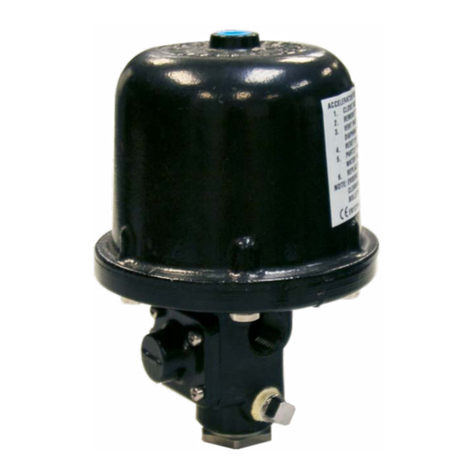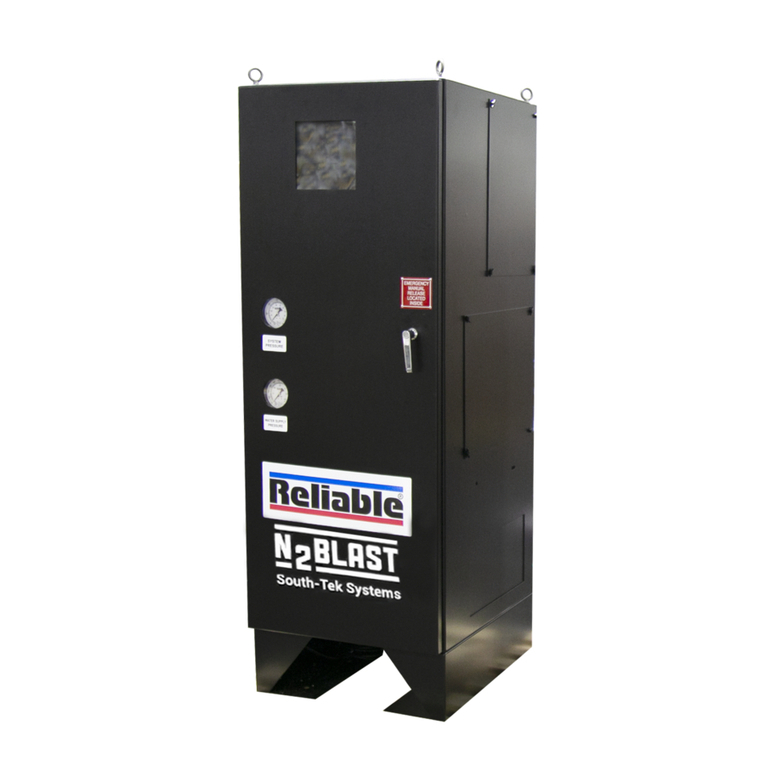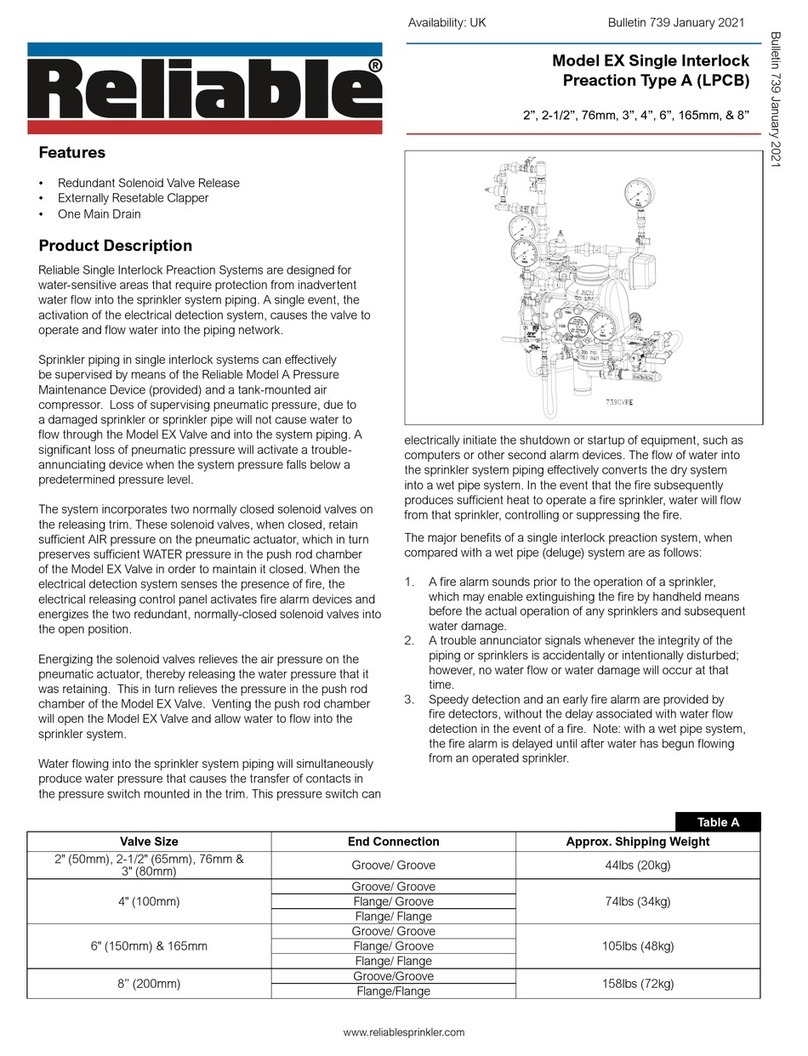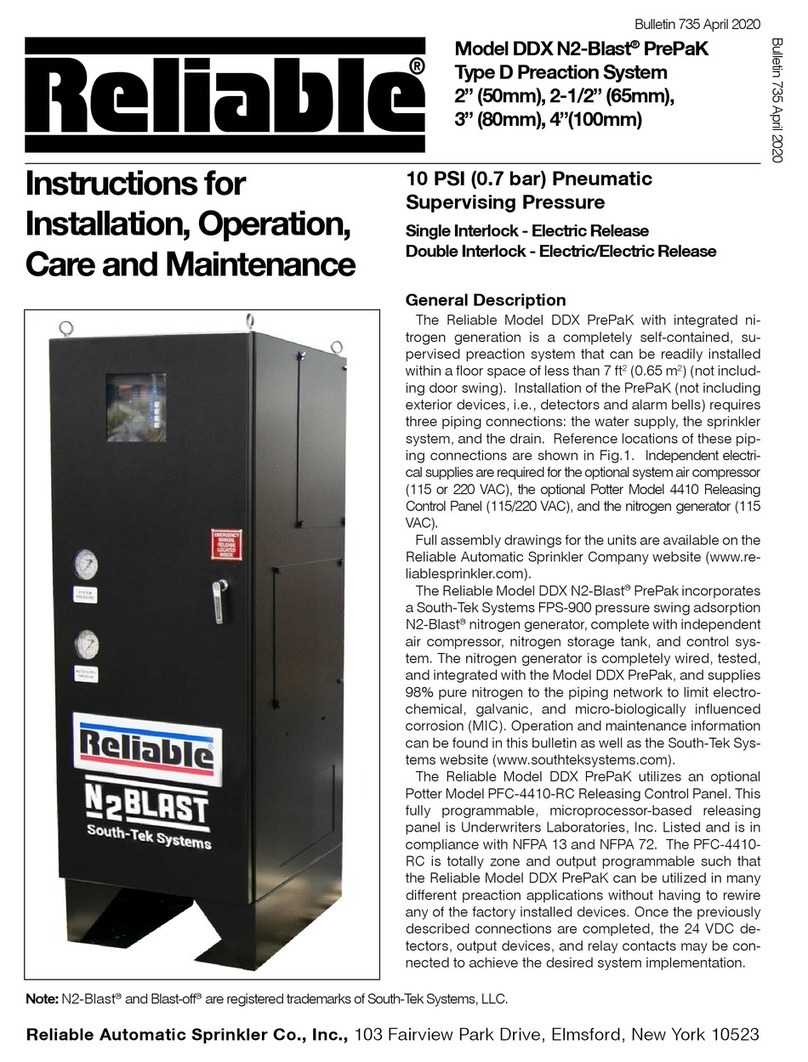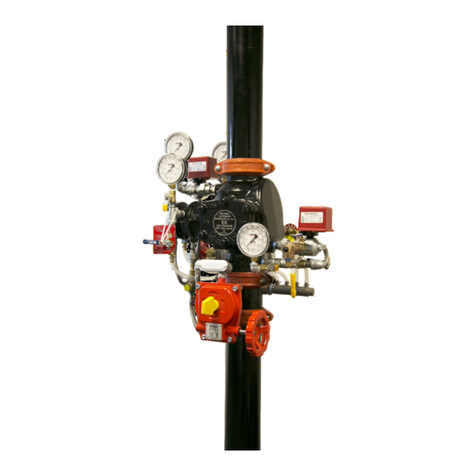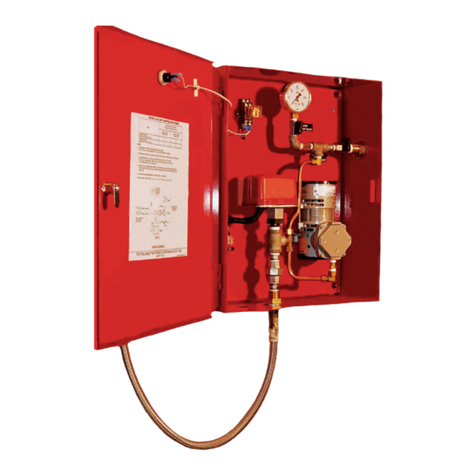
the system which steadies the clapper and prevents false
alarms. Should a heavy surge force the clapper off its seat
and allow water to flow into the alarm line, the Model E1
Retard Chamber comes into action.
2. The retard chamber and the restriction and drain orifices
allow intermittent flows to be drained before they can fill the
chamber and pass on to operate the electric and
mechanical alarms.
Constant Pressure Equipment
The operation of this equipment is the same as described
for the variable pressure equipment, except that due to the
water supply pressure being constant, the retard chamber is
not required. The water, on passing through the groove in the
seat of the alarm valve, flows directly to operate the electric
and mechanical alarms.
Tests
To test the readiness of the entire wet pipe system, open
the inspectors test connection which should cause the
mechanical and the electric alarms to sound. This test
connection is usually located on the end or top line of the
system and its opening is the equivalent to the fusing of one
automatic sprinkler.
To test the operation of the alarm equipment only, open
Valve (A), Fig. 7, until alarm sounds. For the optional
TestAN Drain installation kit open the valve to the “Test”
position. Testing this way has the added benefit of exercising
the clapper assembly. Should the mechanical sprinkler alarm
(water motor) not operate, most likely the strainer is clogged.
Remove the strainer cap and filter to clean. Be sure to replace
the cleaned filter and tighten cap securely. Refer to Bulletin
613 for cleaning information.
6.
Fig. 8 - E3 Horizontal Trim
A. Mechanical Sprinkler Alarm (Water Motor)
Not Operating.
See Testsfor corrective measures.
B. Steady Water Flow Into Drain Line
Steps in the following sequence should be taken to
correct steady water flow into the drain line:
1. Open Valve (A), Fig. 7, to drain which should flush any loose
matter off alarm valve seat. Close valve and observe if
water flow ceases.
2. Close main control valve to determine if water flow is
coming from above or below alarm valve clapper.
Note: Supply pressure gauge should read zero when main
control valve is closed tight and water pressure between
this valve and the alarm valve is relieved. If necessary,
pressure can be relieved through the lower gauge valve
when the ¼ ″NPT plug is removed.
a. If water flow is coming from below clapper, water will
stop running to drain line.
b. If water flow is coming from above clapper, water will
continue to run to drain line.
Note: To minimize downtime, the following parts should
be on hand before the valve is disassembled:
1) Seat installation Wrench:
4 ″– Part No. 6881240000
6 ″– Part No. 6881260000
2) Clapper Rubber Facing and Clamping Ring
Assembly: Item 5, Figure 9.
3) Seat “O”-Rings: Items 9 and 10, Figure 9.
c. In either case (a or b), drain system by opening Valve
(A), Fig. 7, to drain. Remove Cover (2), Fig. 9, Shaft Pipe
Plug (14), Hinge Pin (8) and Clapper Assembly (4).
Note: Hold down Spring (13) when removing Hinge Pin (8).
d. Carefully inspect for the following:
1) Damage to clapper rubber facing – Inspect surface
for imbedded foreign matter. Replace facing if
found damaged (be certain that clapper and
clapper clamping ring surfaces are thoroughly
cleaned before assembling with new facing.)
2) Damage to seat surface – Clean seat thoroughly.
Inspect for any nicks in seat or stones or other
foreign matter lodged in seat groove. If seat or other
parts of valve are found to be severely damaged, an
authorized Reliable distributor should be contacted.
Fig. 7 - E3 Vertical Trim
To test supply piping for unobstructed flow, close Valve (C),
Fig. 5, and open Valve (A) to the drain position. When the test is
completed, close Drain Valve (A) securely and open Valve (C)
which must be monitored with a suitable supervising device.
For FM insured applications the placement of a Test and
Drain valve (E3 Trim Option) in the 2 ″(50mm) drain line does
not replace the need for an inspector’s test connection at the
outer reaches of the sprinkler system. The drain valve shall not
be used in lieu of the inspector’s test connection for the testing
of the entire wet piping system. The drain valve shall only be
used to exercise the clapper and test valve associated alarm
devises. For all other applications please refer to NFPA 13 or to
the authority having local jurisdiction.
Maintenance
Reliable alarm valves and associated equipment shall
periodically be given a thorough inspection and test. NFPA
25 provides minimum inspection, testing and maintenance
requirements. Alarm valves shall be tested, operated,
cleaned, inspected and parts replaced, as required, at least
annually.
Usually, any trouble will be shown by one or more of the
following symptoms:













